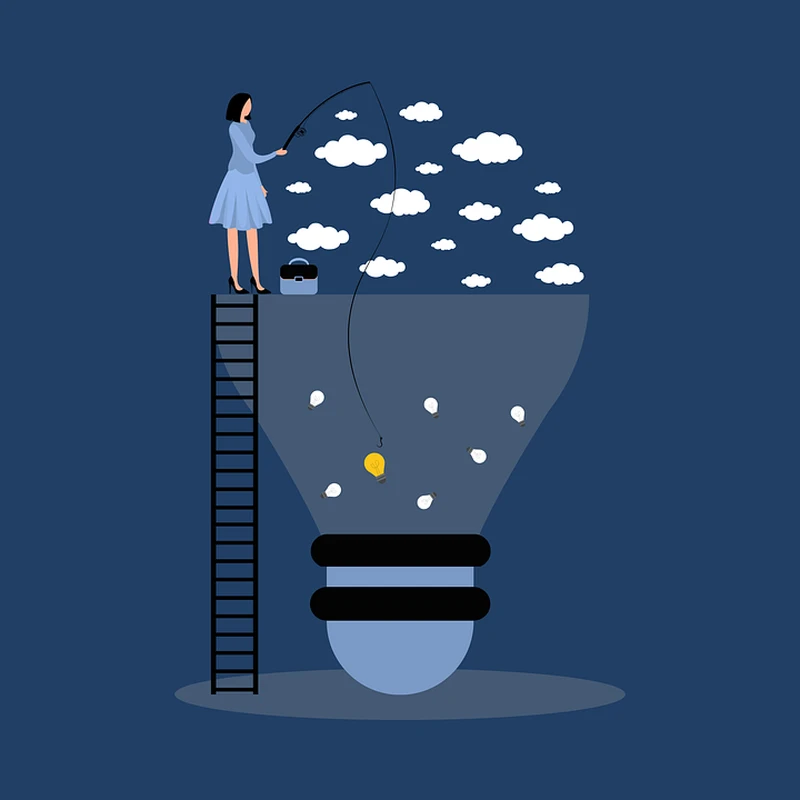AI is developing incredibly rapidly, surpassing humans in strategic games, web design, and data processing. Now, creative thinking has also been added to the list of artificial intelligence capabilities.
AI generates creative ideas better than humans.
Chatbots with AI They outperformed humans when asked to develop alternative uses for everyday objects. Researchers say that artificial intelligence utilized a skill known as divergent thinking. This method is used to generate creative ideas by exploring possible solutions.
A Norwegian study involved 256 volunteers and 3 AI chatbots – ChatGTP3, ChatGTP4, and Copy.Ai – which were asked to provide ideas for the reuse of a rope, a box, a pencil, and a candle. When evaluated using a divergent thinking exercise known as the alternative uses task, which asks a person to come up with as many ways as possible to use a simple object, the chatbots, on average, performed better than humans.

However, researchers have also found that the best human ideas coincide with or surpass those of AI. As noted in the publication Daily Mail The author of the study, Simone Grassini from the University of Stavanger (Norway), highlights the truly remarkable ability demonstrated by AI chatbots.
The conclusions indicate that artificial intelligence outperforms most people in creative thinking. However, it should also be noted that the experiment used a divergent thinking task to measure creative thinking, rather than creativity as a whole. As Ms. Grassini points out, the results show that at least for now, people with the best creative thinking still surpass artificial intelligence.
How was the research conducted?
Each chatbot was tested 11 times with four subject prompts in different sessions, while human participants had 1024 observations during a single trial. Human participants were asked to focus on quality rather than quantity of responses. They were required to come up with original and creative ways to use the object.
The goal was to come up with creative ideas that could be incredibly clever, unusual, interesting, humorous, innovative, or anything else. The ideas did not necessarily have to be practical or realistic. They could be nonsensical or strange, or have a creative rather than conventional use.

In the experiment, participants could come up with as many ideas as they wanted, but the quality of creativity was more important than quantity. It is better to have a few truly insightful creative ideas than many unoriginal ones. Participants were given 30 seconds to come up with responses for each item.
The instructions for the AI were identical to those given to humans, but with exceptions. Working with chatbots showed that if the ChatGTP3 program is not limited to a certain number of options, it always generates 10 ideas, while ChatGTP4 produces 7-8 ideas, and Copy.Ai offers a more varied number of options. To limit the number of ideas in such a way that they align with those provided by humans, the researchers first examined the distribution of the number of human ideas.
Creative ideas from AI are of higher quality than those from humans.
The team noted that, on average, responses generated by chatbots received significantly higher scores for semantic distance and creativity than human responses. The best human response outperformed the best response from each chatbot in seven out of eight evaluation categories. However, human responses contained a larger share of low-quality ideas.
As Ms. Grassini notes, some of the responses provided by the chatbot demonstrated a high level of creativity. The researcher knew that the chatbot would perform well, but she did not expect it to exceed her expectations.

Although this research highlights the potential of artificial intelligence as a tool for enhancing creativity, it also emphasizes the unique and complex nature of human creativity, which may be difficult to fully replicate or surpass with AI technology.
Ms. Grassini notes that it is still unknown whether these AI capabilities will be directly applied in artificial intelligence systems, replacing human work that requires creative thinking. However, she believes that AI can help people enhance their abilities.
